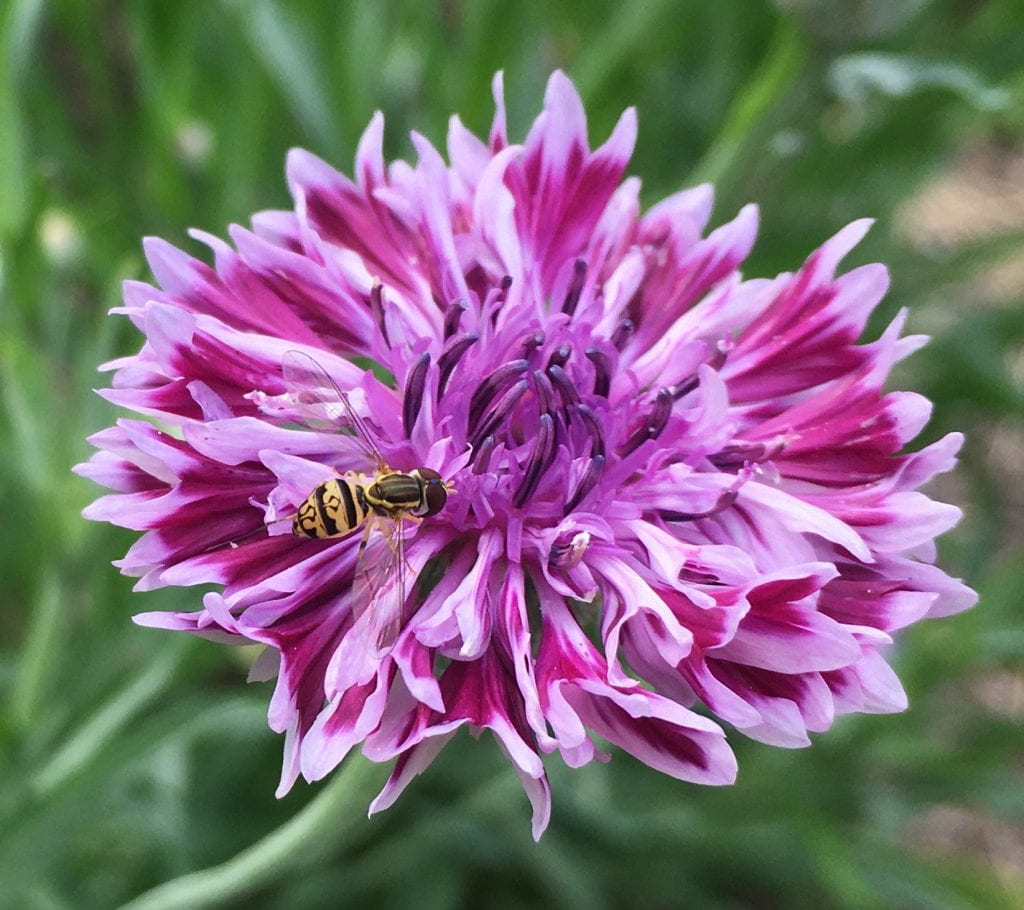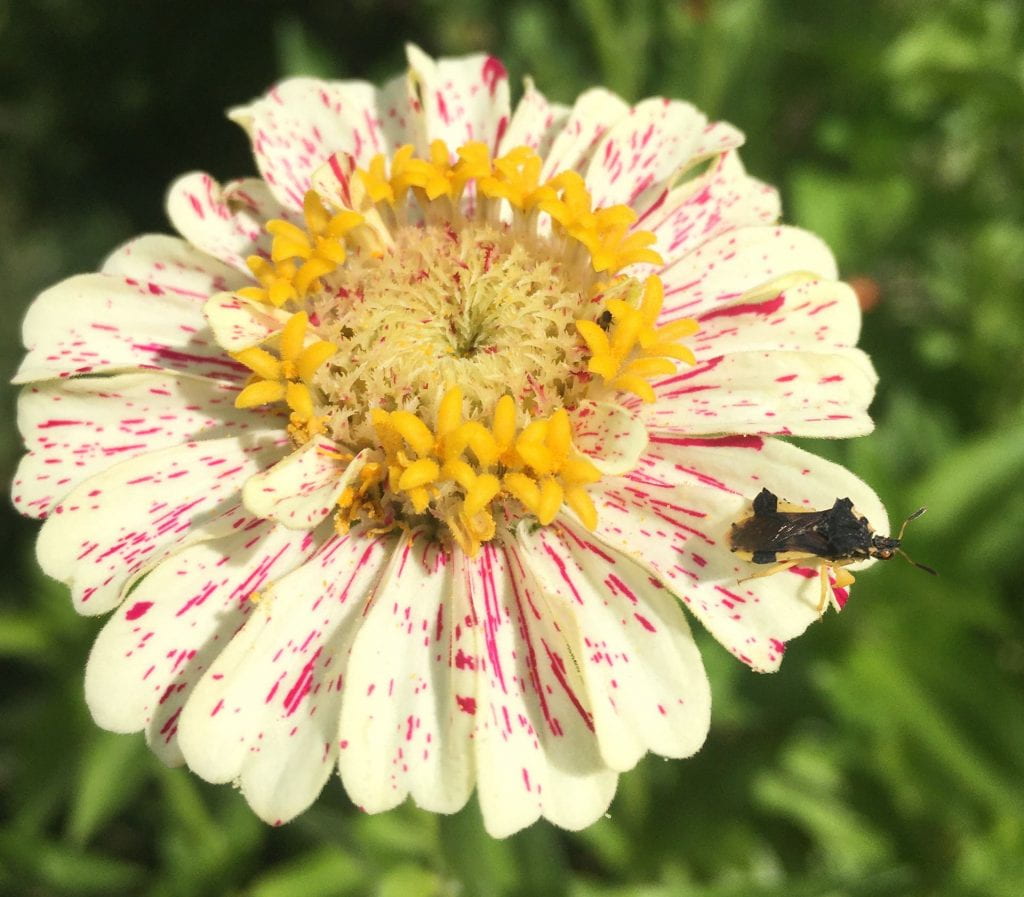
I don’t know about you, but this time of year I start daydreaming of all the plants I can’t wait to grow in my garden once it gets warm. The virtual and hard copy seed catalogs that fill my mailbox and my inbox are full of so many beautiful pictures and inviting suggestions. How to choose?
Well, if one of your goals for your 2022 garden is to provide good habitat for beneficial insects that eat pest insects (natural enemies of pests), here’s some advice…
Look for pollen and nectar producers
Flowers that provide plenty of pollen and nectar make great habitat for natural enemies. This is because some natural enemies also eat pollen or nectar (or both). For example, this adult hover fly feeds on the pollen and nectar produced by this bachelor’s button.

Flowers that produce pollen and nectar also attract other insects that natural enemies feed on (including lots of neutral insects, so the net effect is positive). This ambush bug is hanging out on a zinnia waiting for other insects to wander by and become lunch.

How do you know if a plant will produce flowers rich in pollen and nectar? Read more Finding plants that feed friendly insects
